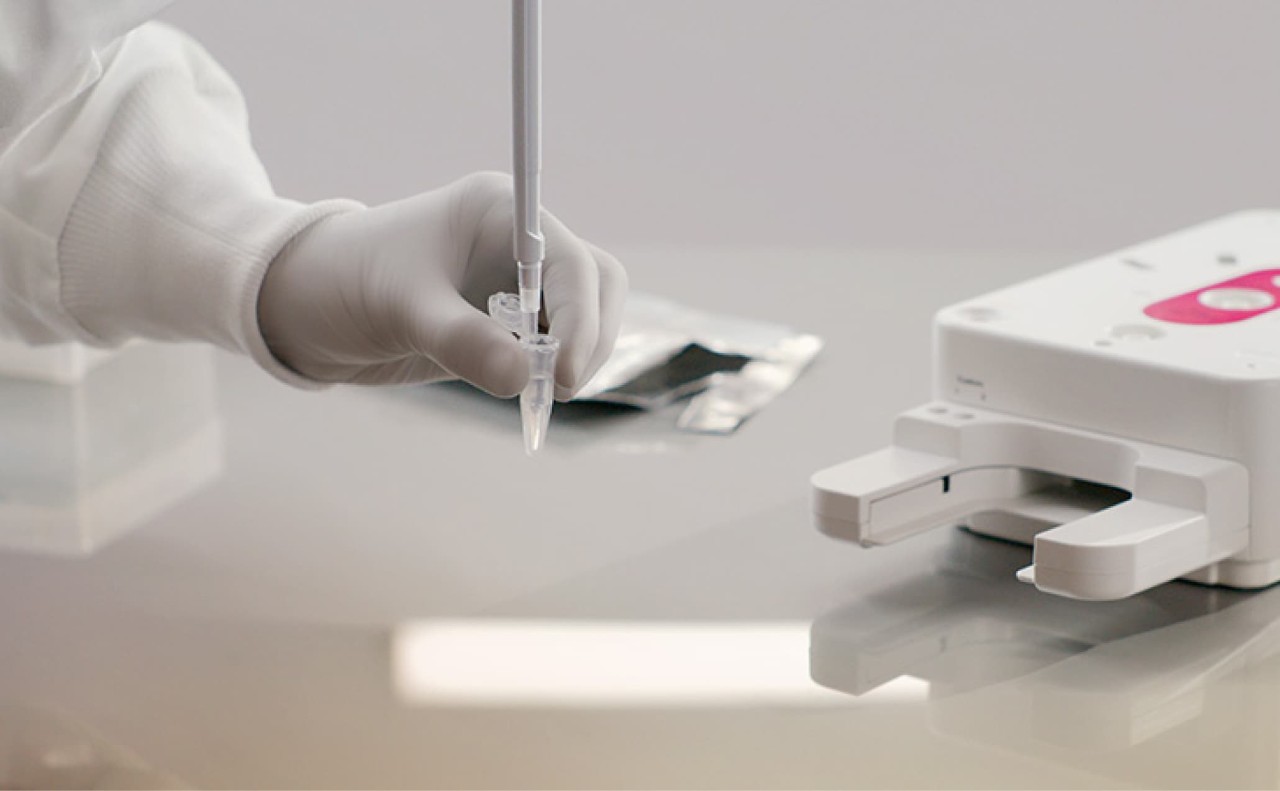Wastewater surveillance
Wastewater surveillance is a method to detect, identify and characterize pathogens found in wastewater. This method provides data to help monitor outbreaks and other threats at the community level.
Using targeted NGS to reduce cost and accelerate analysis
Within complex samples, targeted microbial sequencing is an efficient way to resolve microbial DNA/RNA sequences from non-microbial DNA/RNA while allowing researchers to efficiently identify and characterize microbes of interest. With the power of next-generation sequencing (NGS), techniques such as amplicon sequencing and hybridization (hybrid) capture enrichment are effective methods that can reduce the cost of sequencing and streamline data analysis.

Take the guesswork out of your next workflow. The NGS Workflow Finder provides personalized solution recommendations and resources so you can sequence with confidence.
Amplicon sequencing and hybrid capture are popular methods to perform targeted sequencing. Each approach has different considerations based on the goals of the study. Amplicon sequencing is a highly targeted method to analyze genetic variation in specific genomic regions. This method uses oligonucleotide primers designed to target and amplify small genomes or specific regions of interest, followed by NGS. Hybrid capture is a method that uses biotinylated probes specific to a genomic region of interest. Once bound, these hybridized genomic fragments can be captured by streptavidin for amplification and sequencing.
| Amplicon sequencing | Hybrid capture | |
|---|---|---|
| Targets | Smaller number of targets |
Larger number of targets |
| Example use cases | Single virus variant tracking |
Broad pathogen surveillance |
| Workflow | Simpler and faster turnaround times |
More complex and time-consuming |
The time for precision metagenomics (PMG) is now. Access this eBook to learn why precision metagenomics through hybrid capture enrichment is an innovative solution to detect and characterize pathogens in complex samples. Learn about how PMG is improving public health, workflows, and applications.
Your email address is never shared with third parties.
A low- to mid-throughput NGS assay to identify and track the emergence and prevalence of novel SARS-CoV-2 variants.
Illumina Microbial Amplicon Prep–Influenza A/B
A streamlined whole-genome NGS library prep kit for high-impact research and public health surveillance of influenza A and B viruses.
Illumina Microbial Amplicon Prep (IMAP)
A flexible and streamlined NGS library prep kit that enables various public health surveillance and microbial research applications.
Urinary Pathogen ID/AMR Enrichment Kit
A targeted NGS-based assay for sequencing mycobacterium, M. tuberculosis complex (MTBC) strains, and antimicrobial resistance markers.
Simple, accessible benchtop sequencing for targeted sequencing applications.
A powerful and compact system ideal for rapid, cost-effective microbial sequencing applications.
Combine proven NGS technology with tunable output to enable sequencing and array capabilities across a range of applications.
Empower discoveries with a comprehensive workflow from start to finish.
This app is designed to analyze sequencing libraries generated from Illumina hybrid capture (enrichment) panels or tiled amplicon panels (ie COVIDseq).
Interactive visualization and easy interpretation of results from the Deeplex Myc-TB targeted amplicon kit.
Illumina Respiratory Virus Enrichment Kit
A streamlined workflow offering highly sensitive detection and characterization of common respiratory viruses, including SARS-CoV-2 strains.
Whole-genome sequencing of over 200 RNA and DNA viruses and subtypes identified as high-risk to public health.
Respiratory Pathogen ID/AMR Enrichment Panel Kit
Library prep and enrichment kit that delivers highly sensitive, comprehensive respiratory pathogen identification and antimicrobial resistance insights.
Urinary Pathogen ID/AMR Enrichment Kit
A library prep and enrichment kit that enables sensitive, culture-free detection and analysis of common and underrecognized uropathogens and AMR genes.
Combine proven NGS technology with tunable output to enable sequencing and array capabilities across a range of applications.
Empower discoveries with a comprehensive workflow from start to finish.
Advanced chemistry, optics, and informatics combine to deliver exceptional speed and data quality, outstanding throughput, and scalability.
DRAGEN Microbial Enrichment Plus
This app is designed to analyze sequencing libraries generated from Illumina microbiology enrichment based (hybrid-capture) panels, including the Viral Surveillance Panel v2 and Respiratory Pathogen ID/AMR Enrichment Panel Kit.
See how this method enables microbiologists to evaluate bacterial diversity, detect the abundance of microbes in various environments, and study unculturable microorganisms that are otherwise difficult or impossible to analyze.
Learn how microbial whole-genome sequencing is an important tool for mapping genomes of novel organisms, finishing genomes of known organisms, or comparing genomes across multiple samples.
Using NGS for TB research
Download this eBook to see how NGS is fueling the future of drug-resistant TB (DR-TB) research. Learn about the global implications of DR-TB, how NGS is being used to advance the WHO goal of ending TB, and Illumina targeted and whole-genome sequencing workflows.
Your email address is never shared with third parties.
Track emerging infectious diseases with wastewater surveillance
This application note outlines an NGS workflow for broad viral detection in wastewater surveillance, supporting public health efforts. The MiSeq i100 Series provides same-day results for a rapid response.
Targeted enrichment for disease and AMR detection
This webinar covers the use of NGS-powered tools to evaluate chronic infections such as urinary tract infections (UTIs) and wound infections that continue to impact everyday life from antimicrobial resistant pathogens
Find and characterize respiratory viruses with target enrichment
See this Application Note to learn more about a comprehensive and rapid target enrichment sequencing workflow for highly sensitive detection and characterization of common respiratory viruses, including COVID-19 strains.
Surveillance of infectious disease through wastewater sequencing
This Application Note details methods to detect SARS-CoV-2 variants and other respiratory viruses using the Illumina COVIDSeq Assay and Respiratory Virus Enrichment Kit on the MiSeq System in wastewater samples.
Fast, accurate respiratory virus detection with MiSeq i100
Discover how the MiSeq i100 Series enables same-day, high-sensitivity detection of RSV-A, RSV-B, and SARS-CoV-2 using targeted NGS. This application note highlights streamlined workflows, robust performance across sample types, and flexible prep kits for single or multipathogen surveillance making it a powerful tool for public health labs.
Interested in learning more about targeted microbial sequencing?
Your email address is never shared with third parties.